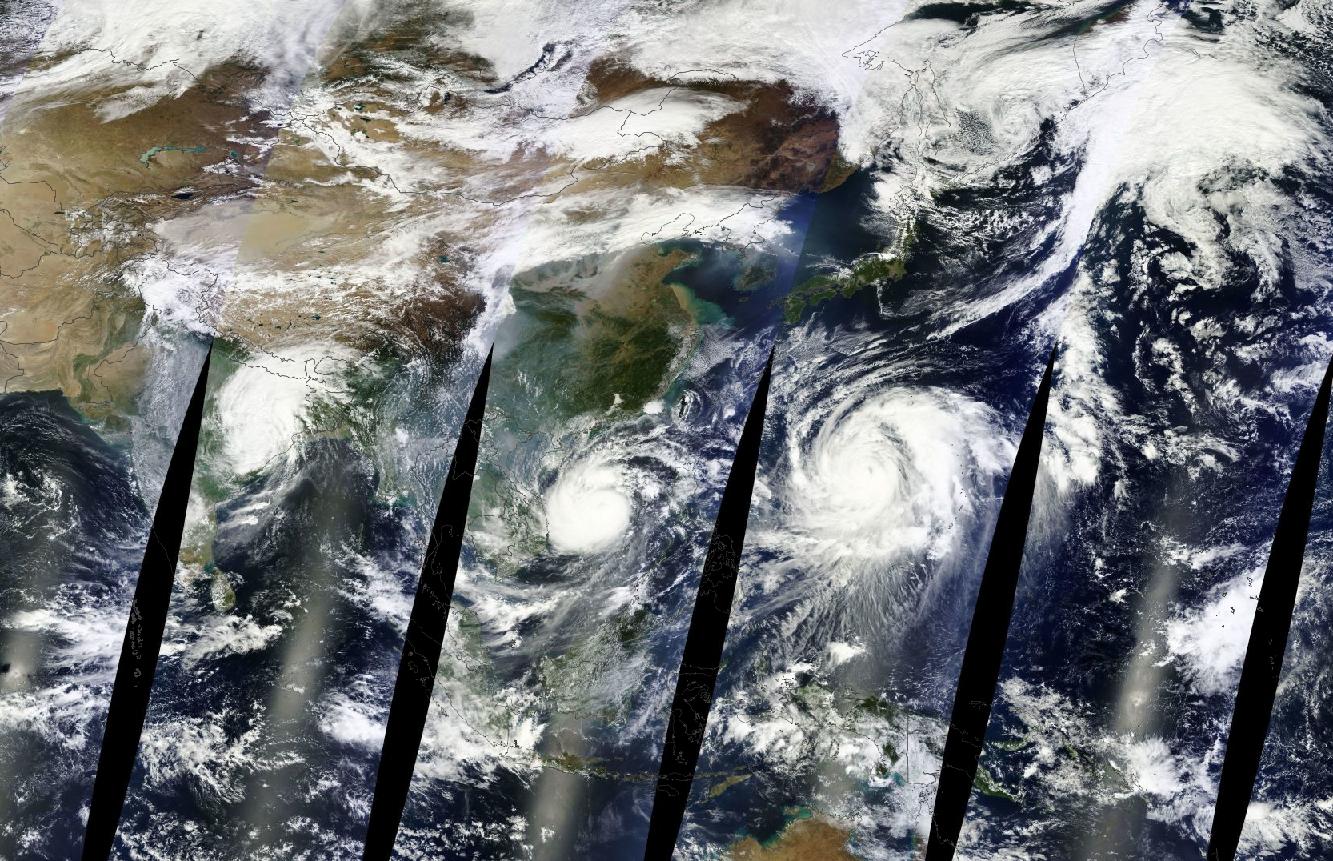Why So Many Powerful Storms in the Pacific?

The West Pacific took a double-whammy this weekend, and another storm is on the way. First Super-cyclone Phailin flooded India, then Typhoon Nari hit Vietnam. Now, 1,200 miles (2,000 kilometers) to the northwest, Typhoon Wipha is pummeling Japan.
The line of storms hit near the peak of the storm season in the West Pacific, so their grouping is not especially rare, weather experts say. Despite the sudden uptick in storms, the Pacific tropical storm season is actually still trending below normal. In the West Pacific, accumulated cyclone energy (ACE) is at 72 percent of average for this date, according to climate modeler Ryan Maue, who runs the forecasting site WeatherBELL. ACE is a measure used by climate modelers to account for the number, strength and duration of both individual tropical cyclones and all tropical cyclones for an entire season. (Tropical cyclone is the broad term used for cyclones, typhoons and hurricanes.)
The East Pacific is even quieter, at 45 percent of average, and the Atlantic is at 30 percent. The ACE is gauged against tropical cyclones between 1981 and 2010.
Though the overall Pacific storm activity is below average, the super-storms stand out because the Atlantic has seen no major hurricanes (those of Category 3 or higher) this season, despite predictions for an active season.
Weather experts aren't sure why. Dry air in the Atlantic is wreaking havoc with budding hurricanes. But ocean and atmospheric patterns are also holding down storm activity across the Northern Hemisphere.
"It's nothing routinely obvious, because expert forecasters were all expecting a very active season, but it must be some fundamental large-scale phenomenon that has been overlooked," Brian McNoldy, a climatologist at the University of Miami, wrote at the Capital Weather Gang blog.
Email Becky Oskin or follow her @beckyoskin. Follow us @livescience, Facebook & Google+. Original article on LiveScience.
Get the world’s most fascinating discoveries delivered straight to your inbox.



